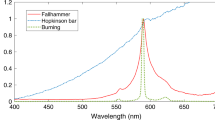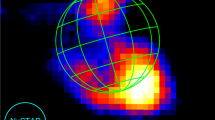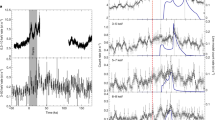Abstract
THE speed of explosion of mixtures of carbon monoxide and oxygen is accelerated by the addition of water or substances containing hydrogen, as was shown by Dixon. The acceleration of the speed is invariably accompanied by a reduction in the emission of radiant energy and vice versa (Garner and Johnson, Phil. Mag., 3, 97; 1927). The radiant energy emitted from these explosions consists mainly of two bands with maxima at 2.8μ and 4.4μ, which are the emission and absorption bands of carbon dioxide. The emitters of this radiation are the molecules of carbon dioxide which have been set in vibration and rotation by the chemical energy liberated during the explosion.
This is a preview of subscription content, access via your institution
Access options
Subscribe to this journal
Receive 51 print issues and online access
$199.00 per year
only $3.90 per issue
Buy this article
- Purchase on Springer Link
- Instant access to full article PDF
Prices may be subject to local taxes which are calculated during checkout
Similar content being viewed by others
Author information
Authors and Affiliations
Rights and permissions
About this article
Cite this article
GARNER, W., ROFFEY, F. The Radiation from Explosions of Carbon Monoxide and Oxygen to which Hydrogen has been added. Nature 121, 56–57 (1928). https://doi.org/10.1038/121056b0
Issue Date:
DOI: https://doi.org/10.1038/121056b0
Comments
By submitting a comment you agree to abide by our Terms and Community Guidelines. If you find something abusive or that does not comply with our terms or guidelines please flag it as inappropriate.



